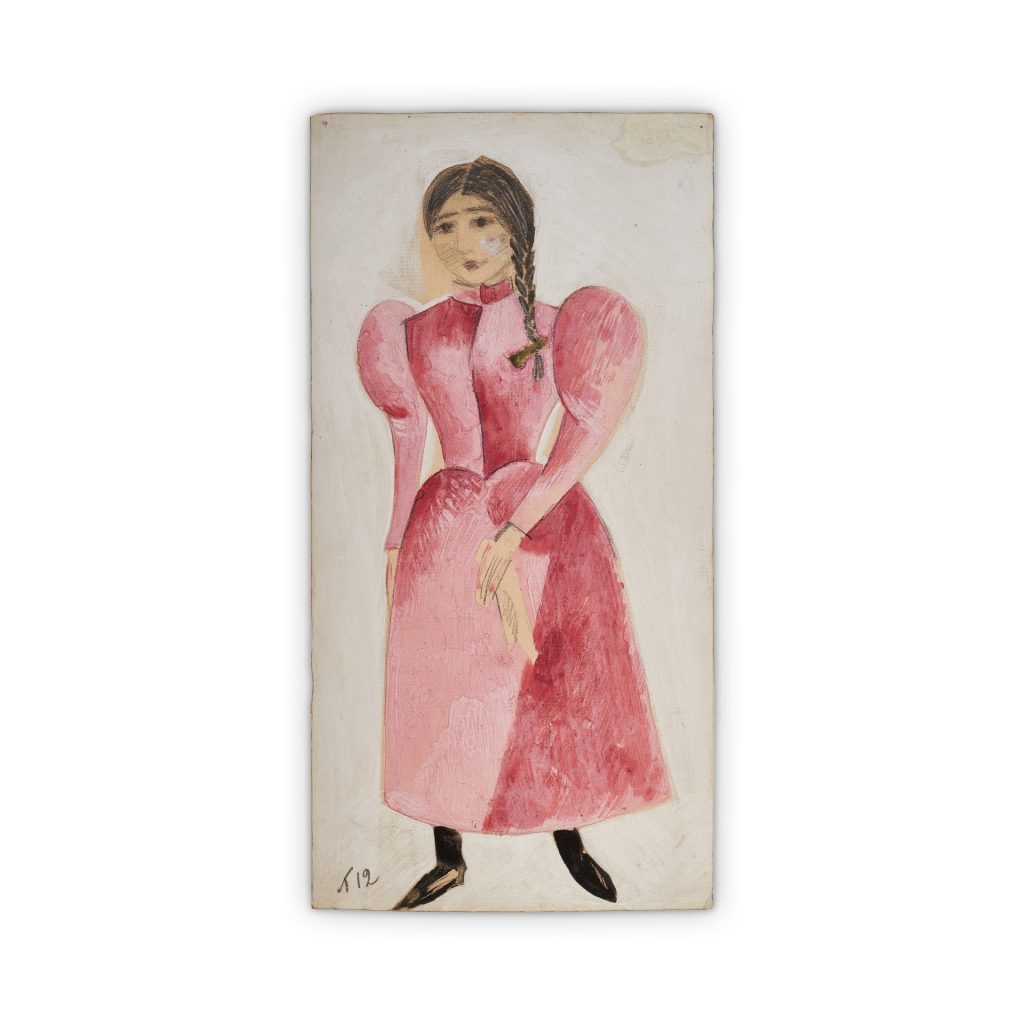Nathan Altman (1889-1970)
Costume sketches for “Lea’s friend” and “the hunchback” in the play The Dybbuk, HaBima Theater
Moscow, Soviet Union (Russia), 1922
Original at the Israel Goor Theater Archives and Museum, Jerusalem
Must Know
The play “The Dybbuk” was written between 1913-1916 by Shloyme Zanvl Rappoport, who was known by his pseudonym S. An-sky. he was a Russian-Jewish intellectual, ethnographer, author, play writer and poet, actively engaged in politics. “The Dybbuk” was composed in Russian and later translated to Yiddish by An-sky himself. In 1917, the play was translated into hebrew by the poet Hayim Nachman Bialik in accordance with the Russian version. The premiere was staged at Habima Theatre in Moscow on 31st January 1922, starred by actress Hanna Rovina and designed by stage designer Nathan Altman. An-sky died only one month before the premiere. Altman, who was a Russian painter, sculptor, stage designer, and book illustrator of Jewish origin, was the first one to design and prepare all the backdrops of the Habima Theatre. he studied art in Odessa and worked with stage design from the beginning of 1916. he was mainly influenced by Picasso and Braque. His artistic career began in 1918 as a backdrop painter at Russian theatres. Later between 1920-1926, still living in Russia, he served as stage designer at the Habima Theatre and painted all the backdrops of “The Dybbuk”, working closely together with director Vakhtangov. The theatre was founded in Poland in 1909, and in 1917 Nachum Zemach re-founded it in Moscow together with actors Menahem Gnessin and Hanna Rovina. “The Dybbuk” was repeatedly performed throughout the years of the Habima Theatre’s existence, in different rollups and played by actors from different generations. The theatre’s identification with the play was so strong that the character of Hanna Rovina, a girl with two long braids wearing a white dress, served as a symbol of the Habima Theater between 1922-1998. “The Dybbuk” was performed at the theatre in many different versions and around 1300 times. “The Dybbuk” was the play the whole Habima Theatre was built upon and, thanks to it, the Habima Theatre became the National Theatre of Israel. Its primary star, Hanna Rovina, became the “Queen of the Jews”, mainly because of her classical timeless role in “The Dybbuk”, which she had been playing repeatedly for 30 years. “The Dybbuk” is a mystical Jewish drama about love, death, and redemption, dealing with the tragic love story of a Kabbalist, who dies but whose soul gains control over the body of his beloved one as an “obsession”, and refuses to leave despite all the attempts of the rabbi to remove it with the help of different oaths.
More Info
In 1928, Altman left Russia for France, where he again started to paint. he painted landscapes and still-life, in which he originally and slightly renewed the tradition of impressionism. he illustrated several children’s books, the Old Testament, Gogol’s The Petersburg Tales, and he also worked with interior design. Altman returned to Russia in 1935 and found himself in a very tense political atmosphere of ideological pressure and terror. Since his painting was far from and did not meet the criteria of critical realism, that the Communist Party enforced, he was forced to stop painting, and lived only on book illustration, which to a certain extent made it possible for him to remain less exposed. The best works of the same period were his scene and costume design for Shakespeare’s King Lear (1941), Othello (1944), and Hamlet (1954). Altman’s works have a prominent place in European museums, in the US, and of course in Russia. His backdrops that were created for “The Dybbuk” are exhibited in a museum in Leningrad.

